Emerging Innovations in Ecommerce Chatbot Technology

E-commerce chatbots have revolutionized customer support, offering businesses faster resolutions and significant cost savings. For instance, Sobot's ecommerce chatbot reduces query resolution times from 38 hours to just 5.4 minutes, while cutting operational costs by 30%. They also drive a 67% increase in sales, showcasing their role in enhancing customer engagement and satisfaction. Staying updated with AI chatbot trends is crucial as conversational AI continues to reshape e-commerce technology. Brands like Sobot leverage chatbot technology to deliver seamless customer experiences, blending analytics with automation to meet evolving demands in commerce. The future trends in this space promise even greater innovation.
Hyper-Personalization in Ecommerce Chatbots
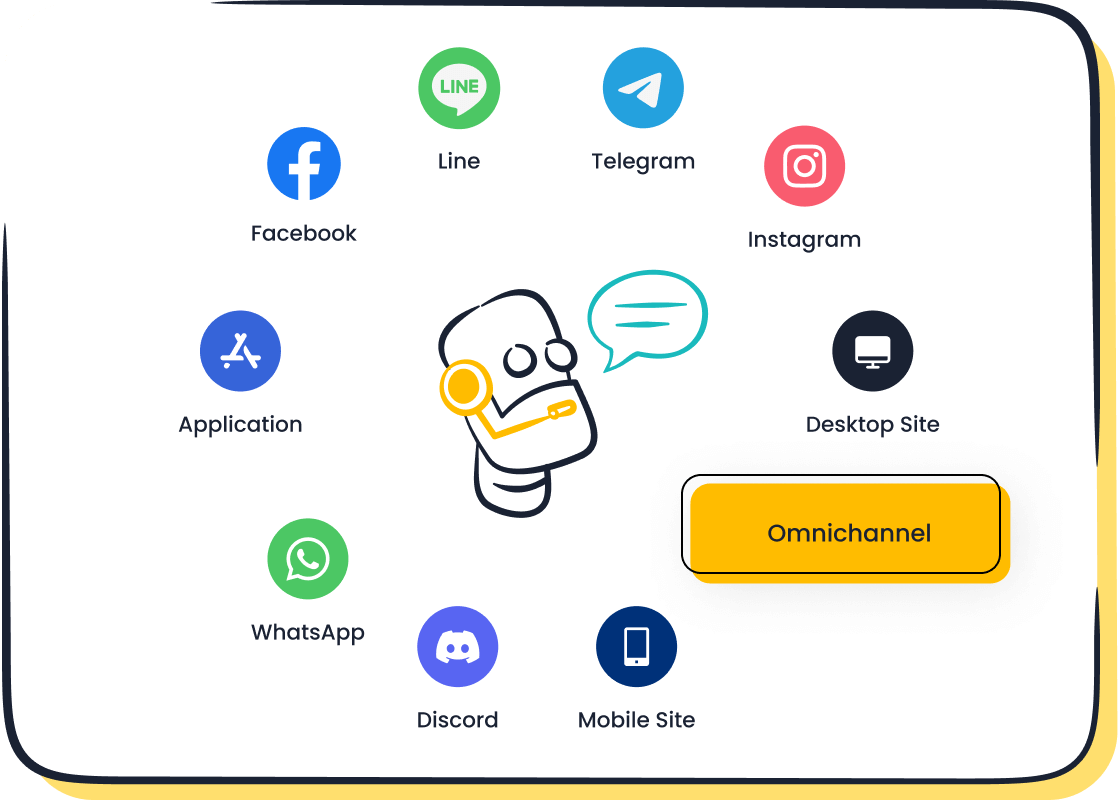
Definition and Role in Customer Experience
Hyper-personalization in e-commerce chatbots refers to the use of advanced technologies like artificial intelligence (AI) and data analytics to deliver highly tailored customer interactions. Unlike traditional personalization, which might only use basic customer details, hyper-personalization dives deeper. It analyzes real-time data, such as browsing behavior, purchase history, and preferences, to create unique experiences for each user.
This approach plays a pivotal role in enhancing customer experience. When you receive product recommendations that align perfectly with your tastes or personalized discounts based on your shopping habits, you feel valued. This sense of recognition fosters trust and loyalty. Businesses that adopt hyper-personalization see tangible benefits, including increased customer satisfaction, higher conversion rates, and improved average order values. For instance, tailored customer journeys can boost the average order value by up to 12%, making hyper-personalization a game-changer in e-commerce.
AI and Predictive Analytics Driving Personalization
AI and predictive analytics are the engines behind hyper-personalization. AI analyzes vast amounts of user data to identify patterns and preferences. For example, platforms like Amazon and Netflix use AI to suggest products or content that match individual tastes, significantly enhancing user engagement. Predictive analytics takes this a step further by anticipating customer needs. Starbucks, for instance, uses predictive personalization in its app to recommend drinks based on past orders and time of day.
These technologies also improve marketing effectiveness. AI-powered chatbots deliver personalized interactions, ensuring that your queries are addressed in a way that feels tailored to you. Dynamic pricing, another AI-driven feature, adjusts prices in real-time based on consumer behavior, optimizing revenue. A survey by the IBM Institute for Business Value highlights the importance of these trends, revealing that companies prioritizing customer experience achieve three times the revenue growth of their peers. With 86% of CEOs considering personalization a critical strategy, the impact of AI and predictive analytics is undeniable.
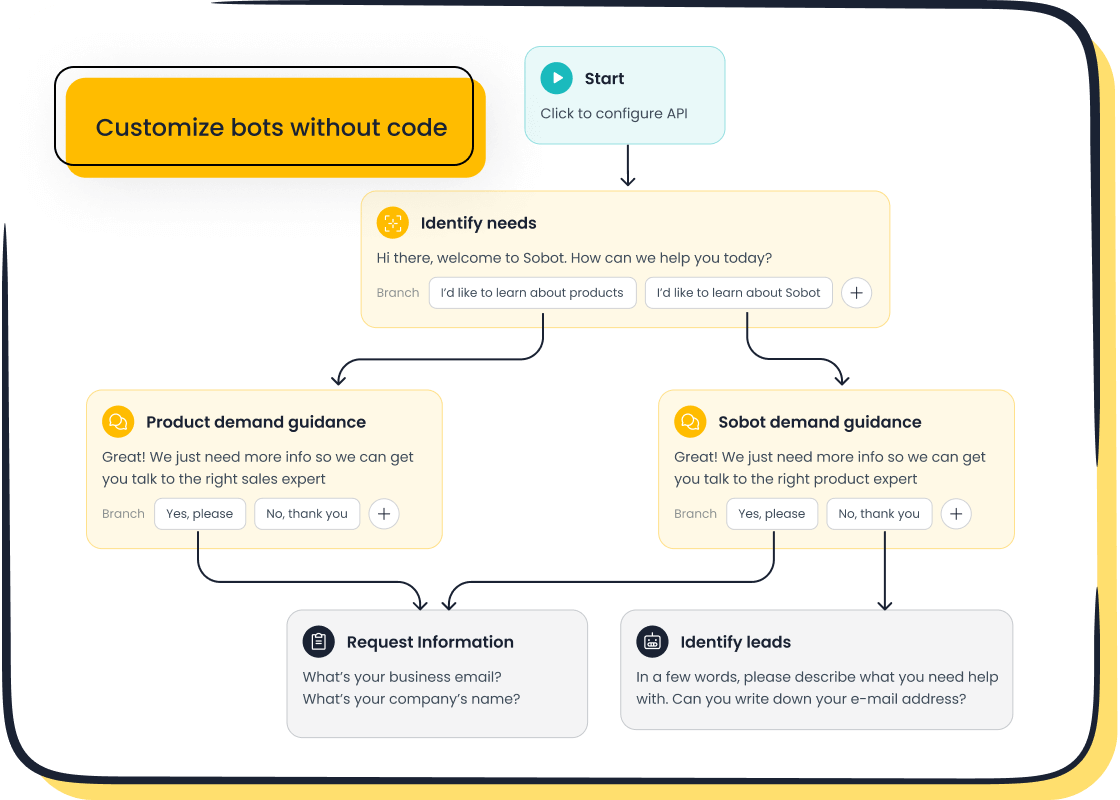
Sobot Chatbot’s Contribution to Tailored Interactions
Sobot’s AI chatbot exemplifies the power of hyper-personalization in e-commerce. It uses advanced AI to analyze customer data and deliver interactions that feel uniquely tailored. Whether you're browsing products or seeking support, the chatbot provides real-time assistance that aligns with your preferences. Its multilingual capabilities ensure seamless communication, while its omnichannel support allows you to interact across platforms like WhatsApp and SMS.
The chatbot also boosts conversions by 20% through proactive messaging and smart self-service options. For example, it can recommend products based on your browsing history or send reminders about items left in your cart. These features not only enhance customer satisfaction but also drive business growth. By integrating hyper-personalization into its chatbot technology, Sobot helps businesses create meaningful connections with their customers, setting a new standard in e-commerce technology.
Voice Integration and the Rise of Voice Commerce

Overview of Voice-Enabled E-commerce Chatbots
Voice-enabled e-commerce chatbots are transforming how you shop online. These chatbots use voice recognition technology to interact with you in a conversational manner, making your shopping experience faster and more intuitive. Instead of typing queries, you can simply speak to the chatbot, which understands your needs and provides instant responses. This innovation is particularly useful when multitasking, as 62% of voice commerce transactions occur while users perform other activities.
The adoption of voice-enabled interfaces is growing rapidly. Millennials and Gen Z lead the way, with usage rates of 74% and 76%, respectively. This trend highlights the increasing preference for voice-based interactions in e-commerce. By 2023, chatbot transactions in eCommerce were projected to reach $112 billion, showcasing the significant role of voice-enabled chatbots in driving sales. As voice commerce continues to evolve, it is becoming an essential tool for businesses aiming to enhance customer engagement and satisfaction.
How Voice Commerce is Revolutionizing Online Shopping
Voice commerce is reshaping the online shopping landscape by making transactions more convenient and personalized. Imagine asking a chatbot to find the best deals on electronics or reorder your favorite coffee without lifting a finger. This level of convenience is why 49% of consumers prefer voice assistants over human interactions in shops and call centers. Additionally, 70% of users are expected to replace visits to physical stores with voice assistants in the next three years.
The market value of voice commerce reached $40 billion in 2022 and is projected to hit $75 billion by 2025. This growth reflects the increasing trust and reliance on voice-enabled technologies. Businesses leveraging voice commerce can reduce cart abandonment rates and improve customer retention. For example, voice-enabled chatbots can remind you about items left in your cart or suggest complementary products based on your purchase history. These features not only streamline the shopping process but also drive higher sales and customer loyalty.

Sobot’s AI Chatbot Voice Capabilities in E-commerce
Sobot’s AI chatbot takes voice commerce to the next level by integrating advanced voice recognition and natural language processing. You can interact with the chatbot using voice commands across multiple platforms, including WhatsApp and SMS. Its real-time speech recognition ensures accurate responses, while its multilingual capabilities allow seamless communication in your preferred language.
The chatbot’s voice capabilities enhance your shopping experience by providing instant assistance and personalized recommendations. For instance, it can suggest products based on your browsing history or help you track orders with simple voice queries. Businesses using Sobot’s chatbot benefit from increased efficiency and customer satisfaction. With features like proactive messaging and omnichannel support, Sobot empowers e-commerce brands to deliver exceptional voice-enabled experiences that drive conversions and loyalty.
Emotionally Intelligent Chatbots in E-commerce
Understanding Emotional Intelligence in AI Chatbots
Emotional intelligence in AI chatbots refers to their ability to recognize, understand, and respond to human emotions during interactions. These chatbots use advanced technologies like natural language processing (NLP) and sentiment analysis to detect emotional cues in text or voice. For example, if a customer expresses frustration, the chatbot can adjust its tone to show empathy and provide a calming response. This capability makes interactions feel more human and builds trust.
In e-commerce, emotionally intelligent chatbots enhance customer satisfaction by addressing not just the "what" but also the "how" of customer queries. When you feel understood, you are more likely to engage positively with a brand. This emotional connection can lead to higher retention rates and stronger loyalty. As e-commerce technology evolves, emotional intelligence is becoming a key feature in chatbot technology, setting the stage for more meaningful customer interactions.
Sentiment Analysis for Enhanced Customer Support
Sentiment analysis is the backbone of emotionally aware chatbots. It enables them to analyze the tone and context of customer messages to determine emotional states. For instance, if a customer types, "I’m really upset about my delayed order," the chatbot identifies the negative sentiment and responds with an empathetic message like, "I’m sorry to hear that. Let me help you resolve this quickly."
This approach improves customer support by making it more responsive and personalized. Studies show that chatbots using emotional language can significantly boost customer satisfaction and repurchase intentions. The table below highlights key findings:
| Study Title | Findings | Implications |
|---|---|---|
| The Effects of Chatbot Service Recovery With Emotion Words on Customer Satisfaction, Repurchase Intention, and Positive Word-Of-Mouth | Emotional language in chatbot interactions enhances customer satisfaction and repurchase intention. | Incorporating emotional language can lead to better customer experiences and positive word-of-mouth. |
| The Potential of Chatbots for Emotional Support and Promoting Mental Well-Being in Different Cultures | Users are more likely to share vulnerable emotions with chatbots than on social media. | Chatbots can serve as effective tools for emotional support, enhancing customer engagement. |

Sobot’s AI chatbot leverages sentiment analysis to deliver empathetic responses, ensuring customers feel valued and understood. This feature not only resolves issues faster but also fosters long-term loyalty.
Benefits of Emotionally Aware Chatbots for E-commerce Businesses
Emotionally intelligent chatbots offer numerous benefits for e-commerce businesses. They improve customer satisfaction by creating more engaging and empathetic interactions. Businesses using these chatbots report a 45% increase in average order value and a 35% rise in conversion rates. Additionally, they reduce customer service response times by 40%, leading to faster resolutions and happier customers.
These chatbots also enhance operational efficiency. By handling emotional and repetitive queries, they free up human agents to focus on complex issues. Sobot’s AI chatbot exemplifies this by combining emotional intelligence with hyper-personalization. It detects customer emotions, provides tailored responses, and operates 24/7 across multiple channels. This capability not only boosts customer satisfaction but also drives business growth.
Emotionally aware chatbots represent one of the most promising future trends in e-commerce technology. They bridge the gap between automation and human connection, making them indispensable in modern commerce.
Omnichannel Capabilities for Seamless Customer Interactions
Importance of Omnichannel Support in E-commerce
Omnichannel support ensures that your customers can interact with your brand seamlessly across multiple platforms. Whether they reach out via email, social media, or live chat, their experience remains consistent. This approach is vital in e-commerce, where customers expect convenience and quick resolutions. Businesses with strong omnichannel strategies retain 89% of their customers, compared to just 33% for those with weak engagement. Additionally, omnichannel strategies can increase purchase rates by 287%, making them a cornerstone of modern e-commerce success.
Brands like Nike and Starbucks have demonstrated the power of omnichannel support. Nike's app enhances in-store experiences, boosting foot traffic by 40% and repeat customer rates by 20%. Starbucks integrates its loyalty program across its website and mobile app, encouraging repeat purchases. These examples highlight how omnichannel strategies can drive customer satisfaction and loyalty.
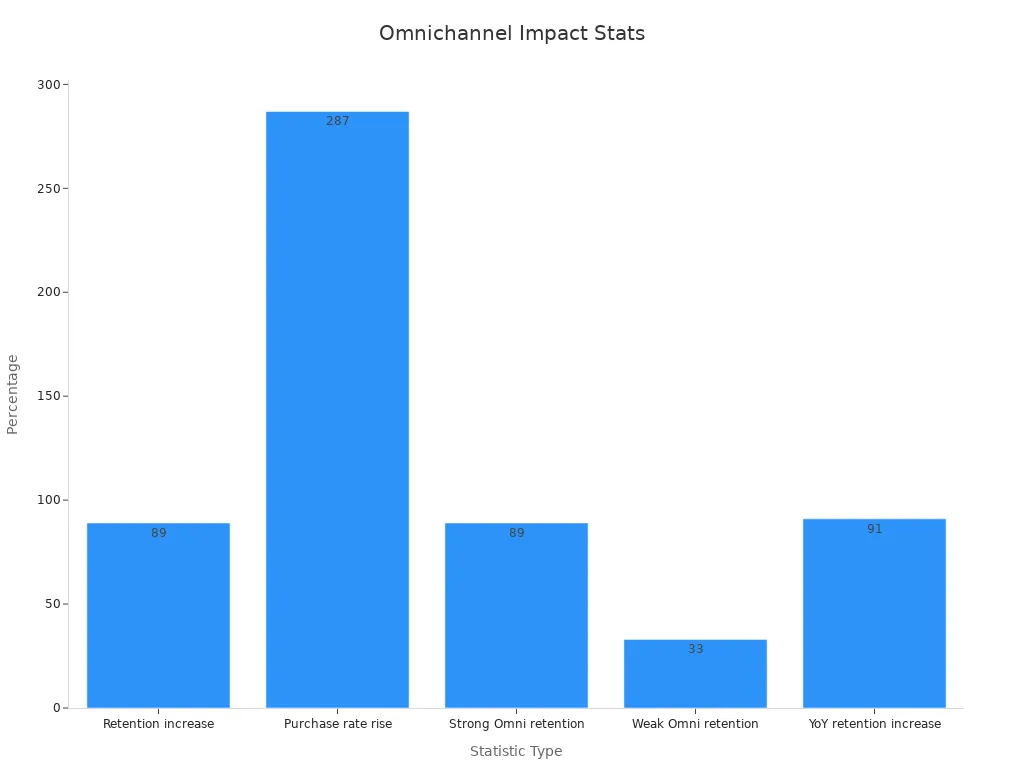
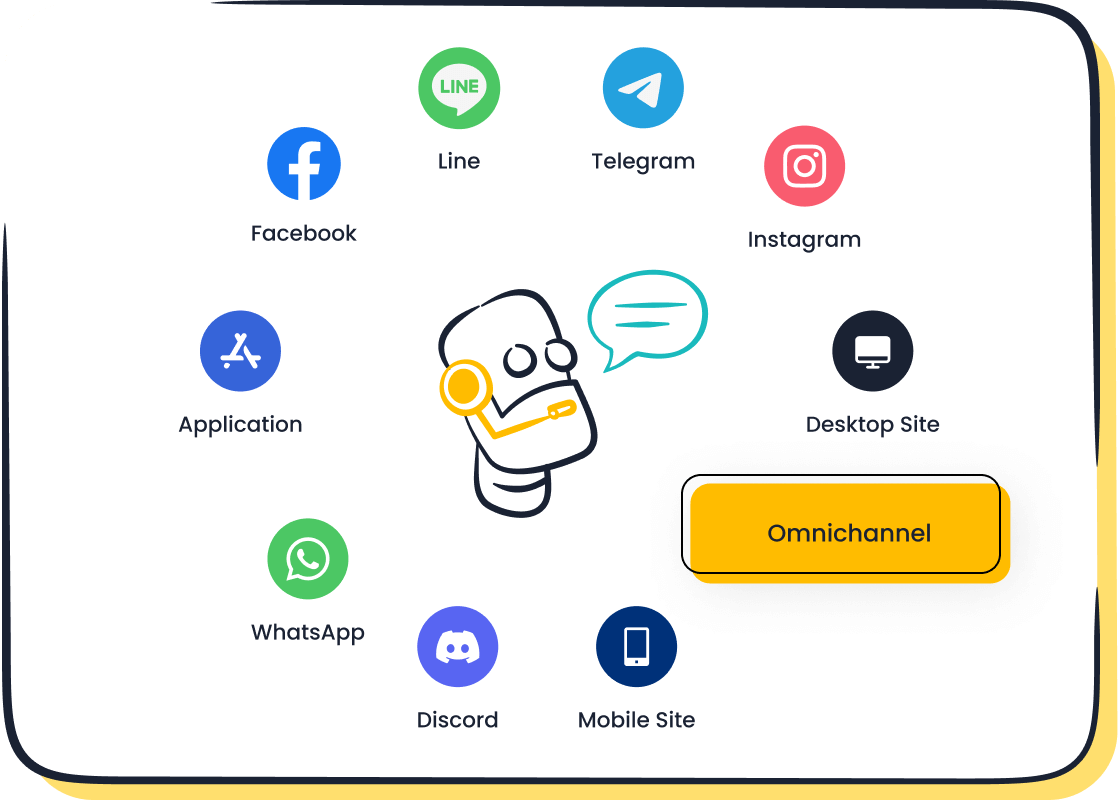
Sobot’s Omnichannel Chatbot Solutions
Sobot’s omnichannel chatbot solutions redefine customer interactions by unifying communication across platforms like WhatsApp, SMS, and email. This integration ensures that your customers receive consistent support, regardless of the channel they choose. Sobot’s chatbot reduces inbound discussion volumes by 20% over two years while maintaining a 97% customer satisfaction score. Its ability to solve 85% of problems and provide over 80% accurate answers demonstrates its effectiveness.
The chatbot also supports multilingual interactions, making it ideal for global e-commerce businesses. Its proactive messaging feature helps you engage customers at the right time, boosting conversions and loyalty. By leveraging Sobot’s omnichannel capabilities, you can enhance customer satisfaction and streamline operations.
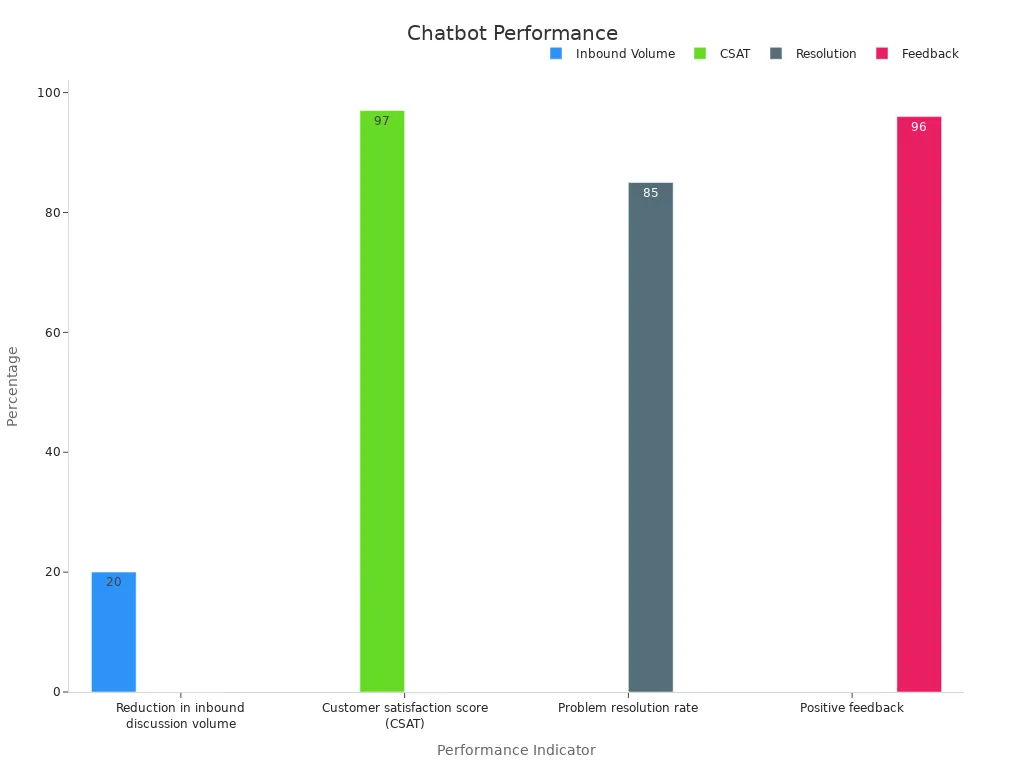
Real-World Examples of Omnichannel Chatbot Implementations
Several businesses have successfully implemented omnichannel chatbots to improve customer experiences. Marriott Hotel uses chatbots to handle service requests and provide information, earning accolades for enhancing guest satisfaction. L’Oreal engages job candidates through multiple channels, streamlining the application process and managing over one million applications. Best Buy employs SMS chatbots to simplify customer support, meeting customers on their preferred platforms.
These examples illustrate how omnichannel chatbots can transform customer interactions. By adopting similar strategies, you can ensure seamless communication and build stronger relationships with your customers.
Practical Applications of AI Chatbot Trends in E-commerce
Use Cases in Customer Support and Service
AI-powered e-commerce chatbots have transformed customer support by offering scalable, efficient, and round-the-clock assistance. These chatbots handle multiple conversations simultaneously, ensuring your customers receive immediate responses during peak inquiry times. For example, they can resolve simple queries like order tracking or refund requests, freeing human agents to focus on complex issues. This division of tasks improves overall support efficiency and reduces operational costs associated with hiring and training staff.
Customers expect instant support, and chatbots deliver it 24/7. They reduce wait times, ensuring issues are resolved quickly from the first contact. This capability enhances customer satisfaction and loyalty. Chatbots also gather real-time feedback, making it easier for you to understand customer opinions and improve your services. Studies show that 75% of business owners report improved customer experiences after implementing chatbots, while 51% of customers prefer bots for immediate assistance (Statista, Zendesk).
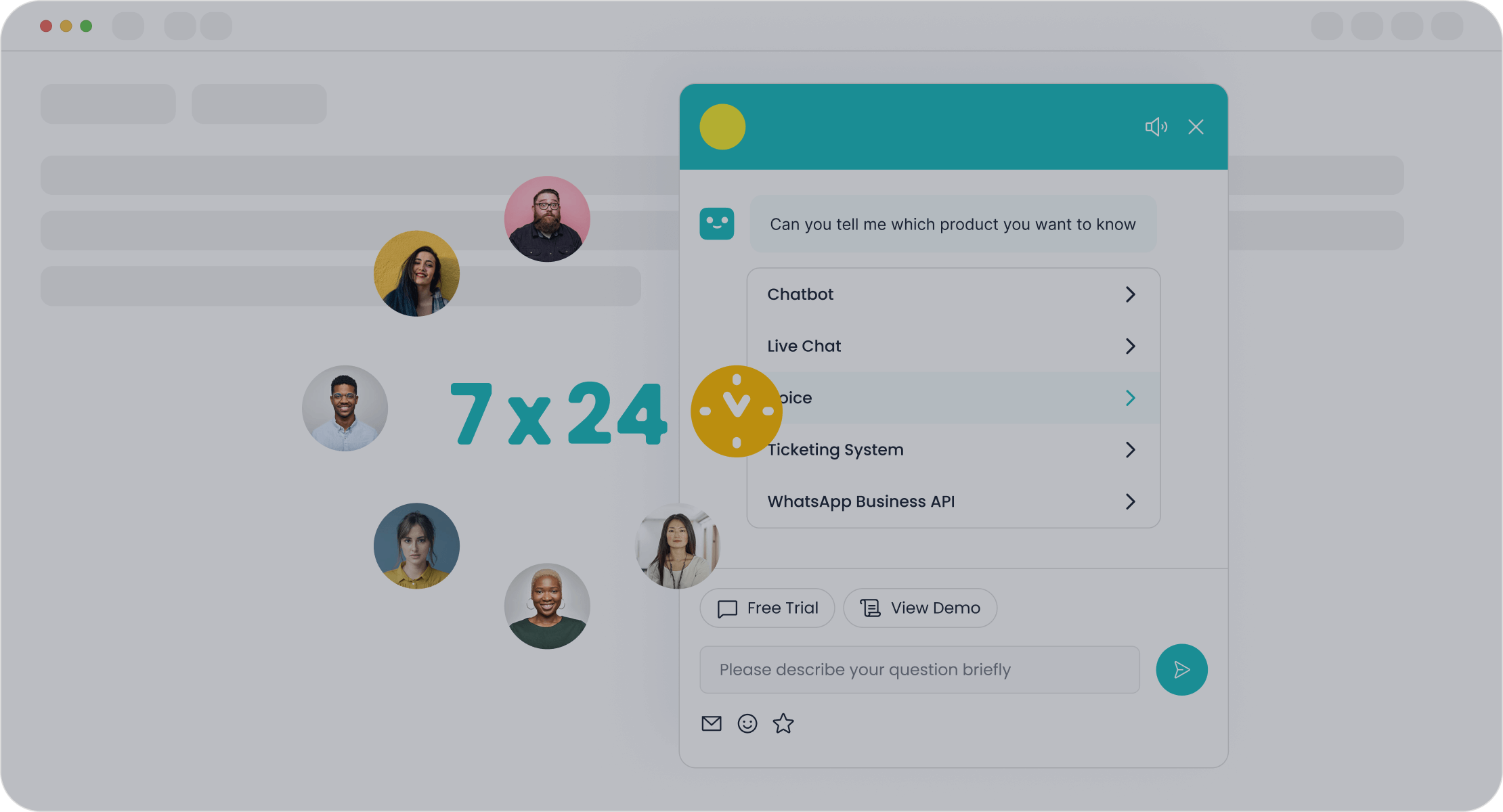
Sobot’s AI chatbot exemplifies these benefits. It operates across multiple channels, including WhatsApp and SMS, ensuring seamless communication. Its multilingual capabilities allow you to cater to a global audience, while its ability to resolve 85% of inquiries autonomously reduces inbound discussion volumes by 20%. By integrating Sobot’s chatbot, you can enhance customer support efficiency and satisfaction.
Chatbots for Upselling, Cross-Selling, and Post-Purchase Engagement
E-commerce chatbots play a pivotal role in driving sales through upselling, cross-selling, and post-purchase engagement. These bots analyze customer data and behavior to offer personalized recommendations. For instance, when a customer adds a smartphone to their cart, the chatbot can suggest complementary products like cases or headphones. This approach increases average order value (AOV) and boosts conversion rates.
Chatbots interact with customers instantly, enhancing the chances of successful upselling and cross-selling. They remain available 24/7, ensuring you never miss a sales opportunity. Metrics like AOV and customer satisfaction highlight their effectiveness. Businesses using chatbots report a 35% rise in conversion rates and a 45% increase in AOV. Additionally, chatbots facilitate post-purchase engagement by sending reminders about warranties, offering discounts on future purchases, or providing product care tips.
Sobot’s AI chatbot excels in these areas. It uses proactive messaging to engage customers at the right time, driving conversions by 20%. Its smart self-service options guide customers through their shopping journey, ensuring a seamless experience. By leveraging Sobot’s chatbot, you can capitalize on upselling and cross-selling opportunities while fostering long-term customer loyalty.

Sobot AI Chatbot’s Role in Boosting Conversions and Efficiency
Sobot’s AI chatbot stands out as a powerful tool for boosting conversions and operational efficiency. It provides 24/7 support, reducing customer wait times and enhancing satisfaction. Quick responses and personalized interactions make it easier for customers to complete their tasks, whether booking an appointment or purchasing a product. The chatbot’s task completion rate exceeds 70%, showcasing its effectiveness in facilitating user actions.
The chatbot also reduces cart abandonment by offering real-time assistance and reminders about items left in carts. Its containment rate, which measures interactions resolved without human help, surpasses 65%. These metrics highlight the chatbot’s ability to streamline operations and drive sales. Businesses using Sobot’s chatbot report significant improvements in conversion rates and efficiency, saving up to 36% of users’ time and reducing stress by 35%.
Sobot’s chatbot integrates seamlessly with your existing systems, ensuring consistent support across platforms. Its multilingual and omnichannel capabilities make it ideal for global e-commerce businesses. By adopting Sobot’s AI chatbot, you can enhance customer satisfaction, reduce operational costs, and achieve sustainable growth in e-commerce.
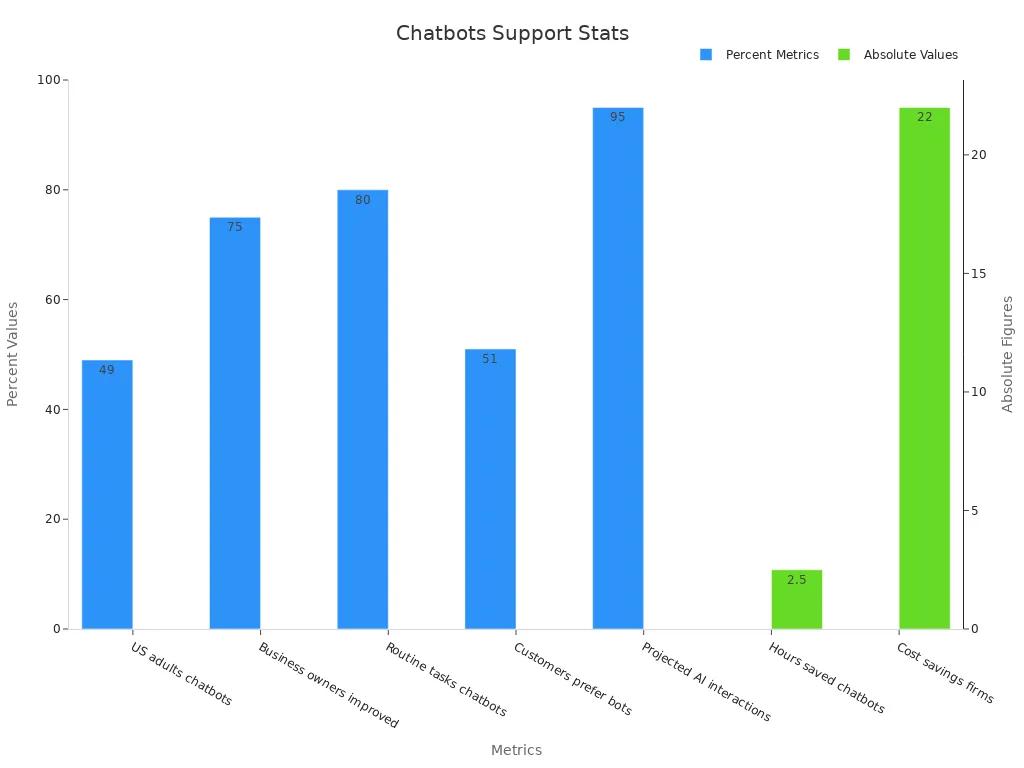
Benefits of Advanced E-commerce Chatbot Technology
Enhanced Customer Engagement and Satisfaction
Advanced e-commerce chatbots redefine how you connect with customers. These chatbots use AI to deliver personalized experiences that make every interaction meaningful. For example, H&M’s chatbot assists with product recommendations, sizing queries, and order tracking, creating a seamless shopping journey. Similarly, Amazon’s Alexa simplifies voice-based shopping, allowing you to browse, order, and track shipments effortlessly. These innovations enhance engagement and set new standards for customer satisfaction.
Customer satisfaction metrics highlight the impact of these technologies. Chatbots achieve a goal completion rate of 90% for well-defined tasks, ensuring effective problem resolution. They handle up to 90% of inquiries autonomously, reducing the need for human intervention. First contact resolution rates exceed 70%, while response accuracy surpasses 90%, ensuring quick and relevant answers. With response times averaging less than two seconds, chatbots keep customers engaged and satisfied throughout their journey.
Operational Efficiency and Cost Savings
E-commerce chatbots improve operational efficiency by automating routine tasks. They handle hundreds of interactions simultaneously, reducing the workload on human agents. This scalability allows you to provide 24/7 support without increasing labor costs. Businesses using chatbots report savings of up to 30% in support costs by automating responses to common queries.
Chatbots also eliminate errors associated with manual processes. Their consistent and accurate responses improve customer trust while reducing operational risks. Instant replies minimize wait times, enhancing customer satisfaction. By automating repetitive inquiries, chatbots free your team to focus on complex issues, boosting overall productivity.
Revenue Growth and Business Scalability
E-commerce chatbots drive revenue growth by optimizing sales processes. They enable upselling and cross-selling, increasing average order values by 67%. Approximately 26% of all transactions now involve chatbot interactions, showcasing their role in boosting conversions. Businesses using chatbots report faster sales cycles, with processes accelerating by 35%.
Chatbots also improve lead generation. They convert 28% of website visitors into leads, helping you expand your customer base. Their ability to resolve 75%-90% of customer requests ensures smooth operations, supporting scalability. By adopting advanced chatbot solutions, you position your business for sustainable growth in the competitive e-commerce landscape.
Challenges and Considerations in Implementing E-commerce Chatbots
Addressing Data Security and Privacy Concerns
When implementing e-commerce chatbots, ensuring data security and privacy is critical. These chatbots often handle sensitive customer information, such as payment details and personal data. Without proper safeguards, this data can be exposed to unintended audiences or even lead to breaches. For example, user prompts might inadvertently disclose sensitive information, creating vulnerabilities.
To mitigate these risks, businesses should adopt robust measures. Encryption and secure authentication protocols protect sensitive data during transmission. Multi-factor authentication (MFA) adds an extra layer of security, ensuring only authorized users access the system. Regular security audits help identify vulnerabilities and ensure compliance with regulations like GDPR and CCPA. Additionally, anonymizing data and implementing user consent mechanisms enhance transparency and trust. By prioritizing these practices, you can safeguard customer data and maintain confidence in your e-commerce chatbot.
Integration Complexities with Existing Systems
Integrating e-commerce chatbots with existing systems can be challenging, especially when dealing with legacy platforms. These older systems often lack the flexibility needed to support modern chatbot technologies. Ensuring seamless communication between the chatbot and other tools, such as CRM or inventory management systems, requires careful planning.
Technical complexities can also arise when maintaining a consistent user experience across multiple platforms. For example, a chatbot must deliver the same level of service on a website, mobile app, or social media channel. Overcoming these challenges involves using APIs and middleware to bridge gaps between systems. Sobot’s AI chatbot simplifies this process by offering omnichannel support and seamless integration with various platforms. Its ability to unify communication channels ensures a consistent experience for your customers, regardless of where they interact with your brand.
Balancing Automation with Human Interaction
While e-commerce chatbots excel at automating repetitive tasks, finding the right balance between automation and human interaction is essential. Customers often prefer quick, automated responses for simple queries, such as order tracking. However, complex or emotionally charged issues may require human intervention to ensure satisfaction.
To achieve this balance, businesses can implement a hybrid approach. Chatbots handle routine inquiries, while human agents focus on more nuanced problems. For instance, Sobot’s AI chatbot uses sentiment analysis to detect when a customer feels frustrated. It can then escalate the issue to a human agent, ensuring the customer receives empathetic support. This approach not only improves efficiency but also enhances customer satisfaction by addressing their needs effectively.
E-commerce chatbots are reshaping how businesses interact with customers. Key trends like hyper-personalization, voice commerce, and emotional intelligence are driving this transformation. These innovations improve customer satisfaction, reduce costs, and boost sales. For example, 75% of consumers interacted with a chatbot for support last year, and businesses using chatbots reported up to a 30% reduction in operational costs.
Adopting advanced solutions like Sobot AI Chatbot ensures you stay competitive. Its omnichannel support, multilingual capabilities, and proactive messaging help you deliver seamless experiences. To leverage these technologies effectively, start by integrating chatbots into your customer service channels. Train your team to optimize chatbot performance and regularly update its knowledge base. These steps will position your business for long-term success in e-commerce.
| Statistic | Value |
|---|---|
| Online shoppers preferring chatbots over human agents | 70% |
| Consumers who interacted with a chatbot for support in the past year | 75% |
| Reduction in operational costs reported by organizations using chatbots | Up to 30% |
FAQ
What is an ecommerce chatbot?
An ecommerce chatbot automates customer interactions for online stores. It answers queries, recommends products, and assists with purchases. These chatbots operate 24/7, improving customer satisfaction and reducing operational costs. For example, Sobot’s chatbot boosts conversions by 20% through proactive messaging and smart self-service.
How do ecommerce chatbots improve customer service?
Ecommerce chatbots provide instant responses to customer inquiries. They handle repetitive tasks, freeing human agents for complex issues. Sobot’s chatbot resolves 85% of queries autonomously, ensuring faster resolutions and higher customer satisfaction.
Can ecommerce chatbots increase sales?
Yes, ecommerce chatbots analyze customer behavior to suggest products and offer personalized recommendations. Sobot’s chatbot increases average order value by 45% and reduces cart abandonment with real-time assistance.
Are ecommerce chatbots secure?
Ecommerce chatbots use encryption and secure authentication to protect customer data. Sobot’s chatbot complies with GDPR and CCPA regulations, ensuring privacy and data security.
How do ecommerce chatbots support global businesses?
Ecommerce chatbots offer multilingual capabilities, enabling communication in multiple languages. Sobot’s chatbot supports global platforms like WhatsApp and SMS, ensuring seamless interactions across regions.
See Also
Enhancing Customer Satisfaction Through E-commerce Chatbots
Best Live Chat Tools for E-commerce This Year
Increasing Sales With E-commerce Live Chat Solutions